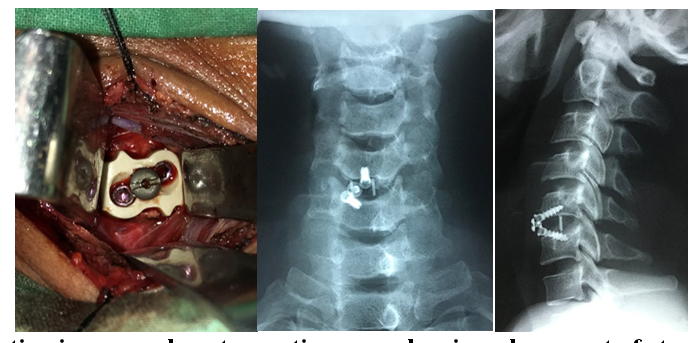Evaluation of result of ACDF by standalone PEEK cage in cervical spondylotic myeloradiculopathy.
Article Sidebar

-
Cervical spondylotic myeloradiculopathy, ACDF, standalone PEEK cage
Abstract
Background: Cervical spondylotic myeloradiculopathy is one of the most common cause of neck pain and radiating arm pain. Multiple techniques and modalities of fixation are used in Anterior Cervical Discectomy and interbody Fusion (ACDF), among them use of standalone PEEK cage is standard one. Objectives: To evaluate the result of ACDF by standalone PEEK cage for Cervical spondylotic myeloradiculopathy. Methods: This prospective study was conducted in the Department of Orthopaedics, BSMMU, Dhaka from July 2015 to June 2020. A total number of 64 (40 male and 24 female) patients with cervical spondylotic myeloradiculopathy with single or two level involvement confirmed by MRI were selected for the study who were failed to improve after conservative treatment. Modified Odom’s criteria, visual analogue scale (VAS), Nurick Grading and bridwell criteria for cervical spondylotic myelopathy was used for evaluation of the results. Result: Mean age of the patients was 51.6 ± 7.42 years. Most of the patients were farmers 24 (37.5%). Single level involvement was in 38(59.4%) cases and two level involvement were in 26(40.6%) cases. Most commonly involved level was C5/6 (35 cases, 55%). Preoperative VAS score was 7.66 ± 0.53 which significantly reduced to 1.22 ± 0.31 after 12 months of operation. Grade I fusion was observed in 53(82.8%) patients in 12 months by Bridwell grade of fusion. Acording to modified Odom’s criteria, postoperative outcome at 12 months of follow up, 51(79.7%) patients showed excellent, 11(17.2%) patients showed good outcome and 2(3.1%) showed fair outcome. No poor outcome was found. P value was 0.003.Conclusion: ACDF is the best technique for the treatment of cervical disc disease with excellent functional outcome which is achieved by using standalone PEEK cage. This can be used with minimum risk as well excellent fusion rate.